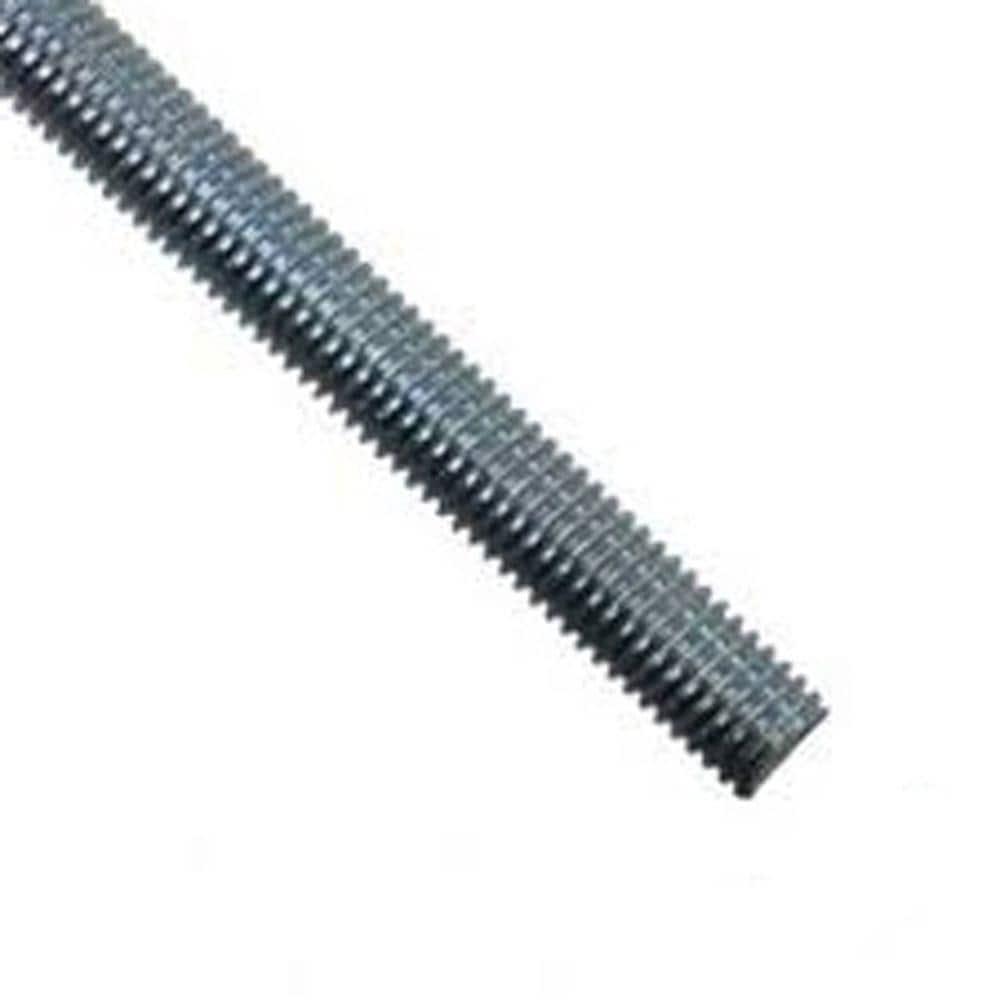ROUSTABOUT
Elite Member
- Joined
- Jan 30, 2008
- Messages
- 3,186
- Location
- Luther Willis Hill, AR
- Tractor
- Pettibone, Ford, Massey Ferguson, International, JD, David Bradley, home mades
Here in oilfield country, local supply houses have grade 10 all thread.
Maybe the chart is different than your expectations because you need to reassess your paradigmsCan someone please explain why this chart is different from my expectation? Is hanger rod different from all thread? Did I come as close to fouling up as the ME said? Thanks in advance for your replies.
Your question is structural and not mechanicalMaybe someone knowledgeable in mechanical engineering can explain a situation to me. I used some 1/2" all thread on a project and was told that the maximum tensile load I could allow for is 550 poundsper all thread. This was based on the information in a chart that I later found on engineering toolbox.com

Threaded Rods - Loads in Imperial Units
Weight rating of threaded hanger rods.www.engineeringtoolbox.com
As it was explained to me, since the allowable load on a 1/2" threaded rod is 1100 pounds per inch (according to the chart) and I was using a nut that was about 1/2" thick then I was only able to put a 550 pound load on that all thread.
When the chart was presented to me the note at the bottom was cropped out, that note states "The maximum loads in the table above are based on allowable tensile stress of 12 kpsi - reduced by 25% to 9 kpsi allowable stress." My understanding is that all thread is based on 60kpsi material. For background what I did with the all thread and nuts is this: I rolled a 1200 pound transformer into extremely tight quarters on a dolly then used the all threads (2) that were attached to an overhead beam as a screw jack to lift the transformer off the dolly and then lower it down in place. The task was performed successfully and no strain or imminent failure was noted.
Can someone please explain why this chart is different from my expectation? Is hanger rod different from all thread? Did I come as close to fouling up as the ME said? Thanks in advance for your replies.
I'm not completely sure I understand the question. The chart you are showing lists allowable capacities when using threaded rod as a hanger, and contain significant safety factors compared to what would actually fail. Given various vibrations, dynamic load, material variations, etc, safety factors are common to ensure that you don't design something right on the edge of failure.Maybe someone knowledgeable in mechanical engineering can explain a situation to me. I used some 1/2" all thread on a project and was told that the maximum tensile load I could allow for is 550 poundsper all thread. This was based on the information in a chart that I later found on engineering toolbox.com

Threaded Rods - Loads in Imperial Units
Weight rating of threaded hanger rods.www.engineeringtoolbox.com
As it was explained to me, since the allowable load on a 1/2" threaded rod is 1100 pounds per inch (according to the chart) and I was using a nut that was about 1/2" thick then I was only able to put a 550 pound load on that all thread.
When the chart was presented to me the note at the bottom was cropped out, that note states "The maximum loads in the table above are based on allowable tensile stress of 12 kpsi - reduced by 25% to 9 kpsi allowable stress." My understanding is that all thread is based on 60kpsi material. For background what I did with the all thread and nuts is this: I rolled a 1200 pound transformer into extremely tight quarters on a dolly then used the all threads (2) that were attached to an overhead beam as a screw jack to lift the transformer off the dolly and then lower it down in place. The task was performed successfully and no strain or imminent failure was noted.
Can someone please explain why this chart is different from my expectation? Is hanger rod different from all thread? Did I come as close to fouling up as the ME said? Thanks in advance for your replies.
I realize this thread is old. I'll respond late. The published allowable load for each allthread is not "1100 pounds per inch." It is 1100 pounds. It is based upon a maximum allowable tensile stress of 9000 psi. It is calculated as Max Load =1100lb/0.13in**2= 8461psi which is approximately 9000 when rounded. That is their allowable stress calculation to avoid tensile failure in the rod. It has nothing to do with the shear stress in the threads between the nut and rod when the nut takes the rod's axial load and transmits it to the hangar. Your 1100 pounds per inch comment suggests you may be thinking about preventing failure in the threads. If you lifted 1200 lbs. using 2 rods, the tensile stress in each of your rods was 1200lb./(2)(0.13in**2)=4615psi. Quite safe as far as tensile stress in each rod. Mild steel will yield at around 30,000psi and allthread will likely have better material properties. So if you tried to lift about 6 or 7 times as heavy an object you might approach the yield strength of the rods. Agree with previous commentor regarding not using thin nuts with few engaged threads but that's not what is being offered in the chart.Maybe someone knowledgeable in mechanical engineering can explain a situation to me. I used some 1/2" all thread on a project and was told that the maximum tensile load I could allow for is 550 poundsper all thread. This was based on the information in a chart that I later found on engineering toolbox.com

Threaded Rods - Loads in Imperial Units
Weight rating of threaded hanger rods.www.engineeringtoolbox.com
As it was explained to me, since the allowable load on a 1/2" threaded rod is 1100 pounds per inch (according to the chart) and I was using a nut that was about 1/2" thick then I was only able to put a 550 pound load on that all thread.
When the chart was presented to me the note at the bottom was cropped out, that note states "The maximum loads in the table above are based on allowable tensile stress of 12 kpsi - reduced by 25% to 9 kpsi allowable stress." My understanding is that all thread is based on 60kpsi material. For background what I did with the all thread and nuts is this: I rolled a 1200 pound transformer into extremely tight quarters on a dolly then used the all threads (2) that were attached to an overhead beam as a screw jack to lift the transformer off the dolly and then lower it down in place. The task was performed successfully and no strain or imminent failure was noted.
Can someone please explain why this chart is different from my expectation? Is hanger rod different from all thread? Did I come as close to fouling up as the ME said? Thanks in advance for your replies.

